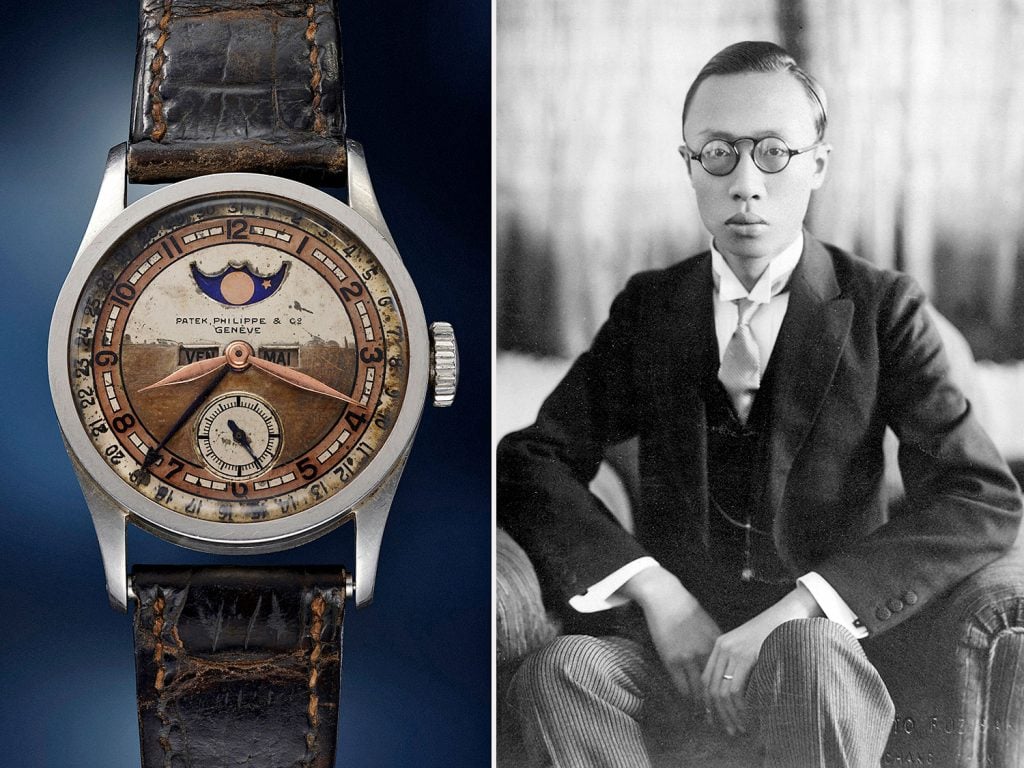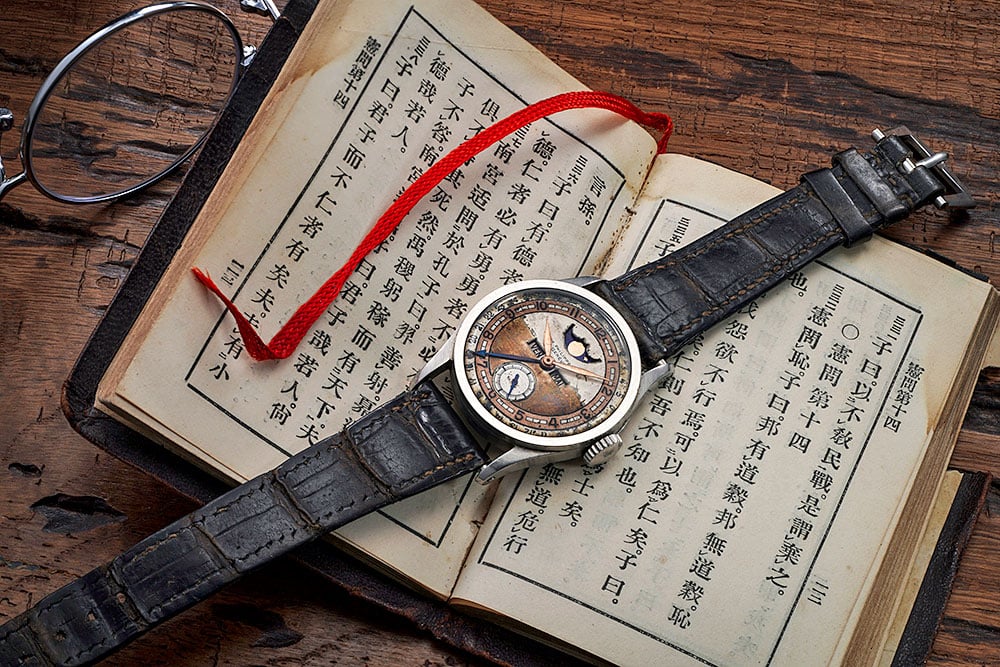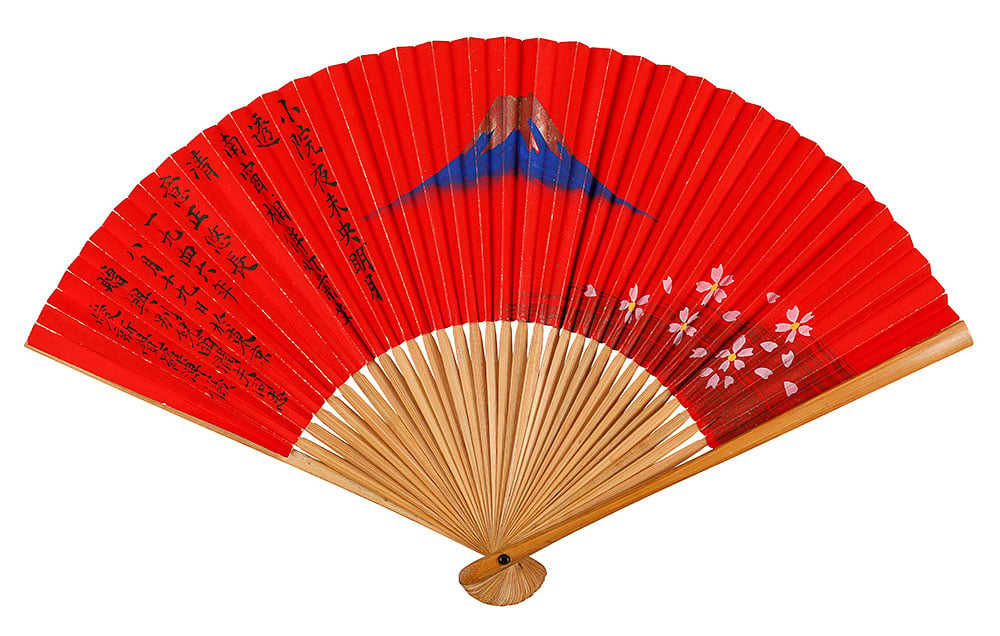Auctions
A Spectacular 1937 Patek Philippe Wristwatch, Owned by the Last Emperor of China, Has Resurfaced at Auction
Aisin-Giro Puyi wore the luxury timepiece while he was detained in Siberia for five years.

Aisin-Giro Puyi wore the luxury timepiece while he was detained in Siberia for five years.

Lee Carter

Swiss luxury watchmaker Patek Philippe made a most extraordinary timepiece in 1937—that was almost lost to history. Called the Reference 96 Quantieme Lune, it’s one of several artifacts in a Phillips sale currently on tour, starting with the auction house’s new Asia headquarters in Hong Kong, before it heads to the auction block.
The exceedingly rare watch, completed at the onset of Word War II, is significant for having been owned by Aisin-Giro Puyi, the last emperor of the Qing dynasty in China—although it is not known how or when he obtained the watch.
Puyi’s remarkable rise and fall is dramatized in Bernardo Bertolucci’s 1987 film The Last Emperor. Adapted from Puyi’s autobiography, written in 1964, it was the first Western production allowed by the People’s Republic of China to film in Beijing’s Forbidden City, where Puyi lived as a child.
Puyi ascended the throne in 1908—at only two years of age—until he was forced to abdicate in 1912, following the Chinese Revolution. In 1934, he was installed as the emperor of the Japanese puppet state of Manchukuo on Chinese territory. It was during this time that he came into possession of the watch. When Japanese forces surrendered to the Allies in 1945, Puyi was captured by the Soviets and spent five years in a Siberian prison.
During those five years, a Soviet official who spoke fluent Mandarin served as Puyi’s interpreter and tutor. After his release, Puyi was allowed to return to China and lived as a civilian until his death in 1967. The watch and other artifacts were gifted to the Russian tutor, resurfacing only recently.

A Patek Philippe Reference 96 Quantieme Lune watch and a leather-bound edition of Confucius’s Analects, formerly from the collection of Aisin-Giro Puyi. Courtesy of Phillips.
The importance of the watch cannot be overstated. The Reference 96 was a revolutionary design featuring an ébauche movement mechanism, engineered by Victorin Piguet in 1929, and a modernist, Bauhaus-inspired platinum Calatrava case by Antoine Gerlach.
Notably, the revered watch was adorned with a moon-phase indicator and a triple-date calendar, a testament to Patek Philippe’s ingenuity in fitting features into thin models—a feat thought impossible at the time. These horological innovations were, however, discontinued at the start of the Great Depression and the war.
Phillips said only seven examples were previously known, with this rarity making that number eight. Of the current eight examples, only three sport this particular silvered dial and enamel Arabic “Roulette” configuration, one of which is housed in Patek Philippe’s museum in Geneva—after the company scooped it up for $2 million at a 2002 auction—and the other was sold to a private collector in 1996.

A paper fan featuring a poem personally inscribed by Aisin-Giro Puyi. Courtesy of Phillips.
The piece is estimated to fetch seven figures when it’s sold by Phillips later in the year, in association with Bacs and Russo. In addition to the Patek, the auction will include an inscribed paper fan, a manuscript notebook, watercolor paintings, and a copy of Analects by Confucius—all belonging to Puyi while he was imprisoned.
The collection will be on view in Hong Kong from March 18 to 31 before making its way to New York (April 6–8), Singapore (April 20–22), London (April 26–28), Taipei (May 6–7), and Geneva (May 10–14). The auction date has yet to be announced.